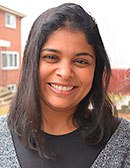
THE BRIDGE TO COLLEGE
The Asian ‘Problem’

There is a commonly-held notion that U.S. universities are biased against Asians. Is this accurate?
Recently, in a lawsuit against Harvard, the plaintiffs announced they could prove that Harvard consistently rates Asian students lower in the “Personal Qualities” attribute of the admissions grading system. It has long been speculated – and litigated – that high-achieving Asians are denied admission in favor of lower-achieving students from other nationalities and ethnicities. Yet statistically, Asian students are admitted to U.S. schools at a higher rate than their population in America.
Why are great students denied admission? The “problem” is not necessarily one of prejudice. Rather, Asian students – and their white counterparts – usually do not understand the grading methods of America’s most-selective universities. If there is a problem, it is a failure to appreciate the evaluation criteria.
Our top-ranked universities use an evaluation system known as “holistic,” a rubric that grades students in multiple categories, not just as academics. Usually, applicants are also given separate numeric ratings of their extracurricular activities and human attributes. It is in these non-academic criteria that academically-superior candidates falter.
When examining a resume of extracurricular and other non-academic activities, admissions officers look for contributions within high school and beyond high school, even internationally. They especially appreciate original efforts. Being unique is critical to a successful application. If a student’s contribution is similar to many other applicants, the school has no pressing need to accept one applicant over another.
Last year, I was asked by a Chinese student association whether American colleges evaluate Asian students within their groups. My answer? No, and yes. Our universities evaluate each applicant individually, but because of strong, supportive cultures, applicants in the same groups often participate in the same activities. Those groups are not limited to nationality, ethnicity or race. When entire high schools participate in an important extracurricular event – for example, Relay for Life – then every resume of every participant includes Relay for Life. When people congregate, they also homogenize, at least on paper.
Every year, we see essays written about the same topics: Bhangra dancing, or robotics, or piano, or soccer, or student government, or community service. These are all valuable activities, but they are not particularly unusual in applicant pools of tens of thousands. When students compete against the best in the world, they have to stand out. That equates to originality. Yet few candidates offer truly unusual contributions. Those candidates who are unique receive higher admissions grades.
But what about Harvard’s lower grading of Asians in the Personal Qualities attribute? Assuming this to be true, the presumption is unfairness. However, “different” is not necessarily “unfair.”
There is room for diversity on every campus, yet should also be some sense of community goals and values. Especially for students who were not born or raised in America, personalities often differ from that uniformity. Cultures are different, from their histories to their governments, religions, languages, traditions, training and conditioning. We are all influenced by the environments in which we are raised. One of our Chinese students – a girl who moved to the U.S. for high school – admitted that the challenges of her transition to the U.S. included not just the English language, but also learning the American psyche. We cannot expect someone who has spent her entire life in Asia to walk, talk and think like someone who has lived only in California, New York, Boston, the South or the Midwest. Not everybody exhibits the interpersonal ideals sought by our top universities.
Having worked with students and families throughout the U.S. and Asia, I have little doubt that Asians, as a group, place more emphasis on academic performance than does the general population. Just look at the tremendous achievements of Indian-American students in the Scripps National Spelling Bee. We should not be surprised that colleges highly rate students in “academic” attributes when those students focus primarily on academics. Conversely, we should not be surprised that those who place greater emphasis on non-academic pursuits – such as sports – are lower-rated in academics but higher rated in other areas. Holistic evaluation means that colleges look at everything that contributes to a learning environment, not just academics.
To be accepted into America’s best universities, you have to be great – even world class – in every attribute they evaluate.
Robert A.G. Levine, president of Selective College Consulting Inc., can be reached at (813) 391-3760, email [email protected] or visit www.SelectiveCollegeConsulting.com
FAMILY MATTERS
New (School) Year Resolutions

A couple of weeks ago, we rushed out to do our annual uniform shopping. As we scrabbled through the racks trying to find the right sizes, it hit me that after 11 years; this would be my last time uniform shopping with my now 8th grader. I’d bought her those French Toast pinafores in preschool with bows on them, the pleated scooters in elementary school, the ubiquitous khaki shorts and polo combo in middle school. Next year will be high school with no uniform.
January might mark the official start of the year, but ever since my kids entered preschool, I’ve considered August to be the real new beginning.
Transformations occur over the summer. Children disappear into May small and buoyant with the joy of freedom from homework and alarms. They emerge inches taller in August, smiles awkwardly sheathed in braces, gazes vulnerable where glasses have been swapped for contacts. Shoes you bought them in April don’t fit by the end of July. Clothes that were perfectly acceptable a few weeks ago are now unthinkable because the child has developed a fashion sense overnight. Sweet boyish voices have gained a startling adult depth. People you once had to help brush their teeth are now reversing out of your driveway, driving other people whose milk mustaches you once wiped off. And all over town, suitcases lie open in childhood bedrooms, their owners texting excitedly with future roommates while their parents shop and pack with leaden hearts, trying desperately not to dwell on the impending departure.
I remember when summer used to stretch out before me like a wasteland and I had to work to fill it up with playdates and long evenings at the community pool with friends. We’d be at Blockbuster almost every day, working our way through every Disney movie and cartoon ever made. Now, it’s as though we are sitting in a car with a driver who’s fallen asleep with his foot on the accelerator. While those with little babies may feel like the whole thing is interminable — I know I sometimes did — those of us with older kids are startled by the sudden curve we see in the road. I realize at this mid-point through raising my daughters that we have a limited time as stewards of their childhoods, and every August marks off that time. What to us is prime years spent sorting out our careers, ageing parents and social lives is their whole childhood. “Each house has its own signature, unknown to all except the grown children who go back to visit,” writes Anita Shreve in “The Stars are Fire.” We create that signature every day, knowingly or unknowingly.
While on vacation in Asheville, N.C., this summer, my daughter and I were getting into the elevator of our hotel when an elderly couple approached. The lady held a bunch of red roses in her hands. She thanked us for holding the door, and explained that the previous day had marked their 49th wedding anniversary. She still remembered every detail of that day, she said — her dress, her flowers, her brother walking her up the aisle. The couple had two sons, now in their 40s. It all went by so fast, she said, shaking her head. “Do things with them now, while you can,” she appealed to me, gesturing to my daughter. “We did, but I wish we had done more. If you wait until you retire, you may not be able to.”
I listened, and adjusted my New School Year Resolutions accordingly. Sure, I’ll try harder to pack healthy lunches and buy Christmas presents early. I’ll mail birthday party invites well in advance instead of frantically texting, “Hey are you free tomorrow?” from Party City. I’ll stay on top of projects and deadlines —mine and theirs —but I’ll also relish the feel of my younger one’s hand curled into mine as we walk into Publix, and the sound of her prattling beside me. After all, it’s her last year in elementary school. I’ll resist the urge to add that extra activity, no matter how enriching it might be; that’s an extra hour in a day we’ll have to just hang around the house together. I’ll plan that unnecessary getaway, let them stay up a little later, and try not to rush through bedtimes. I’ll look forward to the journey of another school year and everything they’ll learn, but I’m going to pay attention and take notes also, because as with everything else child-related, this too will pass.
Anu Varma Panchal is a mother of two and owner of www.YourEditingSolutions.com